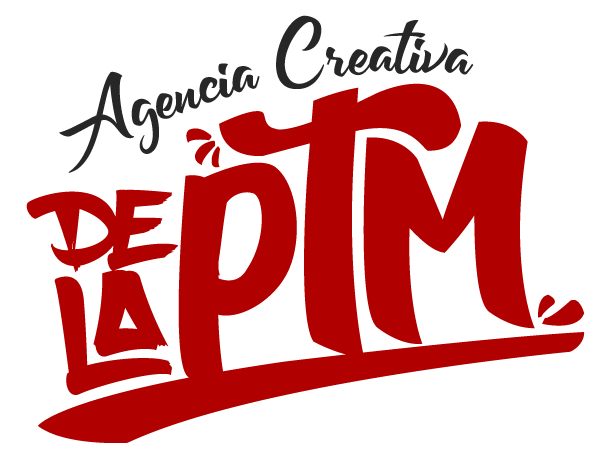Contents
You can collapse and expand example code blocks individually using the arrow on the top-left of the code block. You can also toggle the collapse state of all examples using the toggle button on the top-right of the page. The toggle-all state will be remembered between page loads.
It’s a good place to recalculate layout and re-render the scene. This method is called the first time a component is inserted into the DOM. If this component Ext.Container other components, the onRender method for child components is called after the parent’s onRender. This is not an issue when “B” is destroyed because all of its listeners will be removed at that time.
That is the method previously overridden by derivation or by an override (see Ext#define). If the ename parameter was an event name, this is theaddListener options. The event name, or an object containing event name properties. The number of milliseconds to delay the invocation of the handler after the event fires.

Configure this as true to have this Component centered within its Container. Setting this value to true will make this Component become ‘positioned’, which means it will no longer participate in the layout of the Container that it resides in. DOM selector for a child element that is to be used as label for this Component, set in aria-labelledby attribute. If the selector is by id, the label element can be any existing element, not necessarily a child of the main Component element. An object containing ARIA attributes to be set on this Component’s ARIA element. Use this to set the attributes that cannot be determined by the Component’s state, such as aria-live, aria-flowto, etc.
Your main interest here is to find a pain-free way to transfer some element-specific information. Here you want to transfer a colour-string from the databind() to the draw() function. You use the element simply as a vessel to transport A Walkthrough of SQL Schema your data over to where it is being rendered to the canvas. This method has the same arguments as element’s setXYmethod, but is used to maintain the x and y configs or the left and top config for positioned components.
This is called automatically for Ext.Component and derived classes. Overrides for resolution independent drawing are automatically applied to the ‘2d’ rendering context of the canvas the first time the method is called. Of course, there’s nothing wrong with using a bit of both, and you can even position DOM elements over the top of your canvas to combine them.
It is called automatically by the framework as part of removeListener processing. This allows element listeners to be inherited and overridden when subclassing widgets. For containers his only applies to inner items, not docked items. Thepositioned items are rendered to the element returned by the @link Ext.Container#getPositionedItemTarget method.
The position calculation code calculates where each course box should be moved, but we don’t just want to move them directly there. Instead we’d like How to build an onboarding process for new software developers to smoothly animate from their previous position to the new position. Luckily, we can still use D3’s utilities for interpolation and easing.
setConstrainAlign
In this post we will be looking at creating a chart using D3FC and the new WebGL functionality. With the performance boost that WebGL provides we will see how we can render a large data set of around 54,000 points in a single pass. You can track the mouse location using the D3FC pointer component, and for small datasets a linear search to find the datapoint closest to the pointer location is sufficient. However, for large datasets a linear search is far too time consuming. The D3-force canvas example mentioned above uses a force layout’s .find method and uses that to find the node closest to a mouse click and then sets the drag subject to that node. The differences listed in the linked question/answers speak to the general differences between svg and canvas (vector/raster, etc).
So basically we want our range to go from 0 to the width of our canvas. Finally we assign the 2D context of the canvas to a variable so that we have it there for quick access when drawing in the canvas. Next is the canvasChart variable that will hold the plot drawable area where all the points will appear. To apply margins in this case we can use the known CSS properties (something we can’t do with SVG and that’s why we used translate in step 2).
As you also have access to each datapoint while it’s being bound to each element, you can bring colour and data together in your colourToNode map. In fact, I won’t set the canvas to hidden in this example to show what is going on. But to do so, just add .hiddenCanvas to your CSS and the deed is done. Analytical CRM Note that draw() needs to come right after the databind() function. You couldn’t ask the machine to run databind(), then do something else for a second and then call draw(). Because after 1 second the transitioned states calculated by your databind() function have all transitioned already.
String / Ext.dom.Element / HTMLElement
This should be specified as an object literal containing one or more properties. If specified as false, causes the class to be removed. Note that if this is called multiple times for a certain event, the converse methodresumeEvent will have to be called the same number of times for it to resume firing. An object containing options for the Ext.util.Region#alignTo method, if an Array is used, it will be assumed to be the offset. ‘ at the end of the alignment string to constrain the positioned element to theExt.Viewport. The element will attempt to align as specified, but the position will be adjusted to constrain to the viewport if necessary.

Force the component to take up 100% width and height available, by adding it to Ext.Viewport. The initial set of data to apply to the tpl to update the content area of the Component. It is best to useariaLabelledBy option instead, because screen readers preferaria-labelledby attribute to aria-label. AriaLabel andariaLabelledBy config options are mutually exclusive.
The Resources & Code
Obviously this module requires selections, selections require elements. So to use this with Canvas for things like the enter/update/exit cycle or selection .append/remove/lower/raise we want to use faux elements with Canvas. Most modules and methods that provide SVG path data can also be used to generate canvas path method calls, and consequently can be used for either SVG and Canvas relatively easily. Most of these don’t interact with the DOM at all and can be used easily for either SVG or Canvas. For example d3-quadtree or d3-time-format aren’t SVG or Canvas specific as they don’t deal with the DOM or rendering at all.
The code below will create the exact same result as above, but with less lines and less creation of dummy elements. The nodes dataset already contains all of the location information that we need to create the circles, the x, y and r, the depth to define the color. While this may seem strange, this is actually a common pattern to working with canvas. Even outside of D3.js, it’s very likely you would need a “model” of some kind for the “objects” that is separate from their actual rendering. The only difference in this case is that the “model objects” just happen to be DOM nodes so that we can take advantage of D3.js’s data binding mechanism. In this example, we’ve created a blank canvas, created a scale from our data array and used it to then position rectangles in a canvas.
- Instead, we need to set event handlers on the canvas element itself.
- Any object references will be nulled after this method has finished, to prevent the possibility of memory leaks.
- This property is set to true during the call to initConfig.
- In complex, nested layouts containing many Components, this can make a noticeable improvement in performance.
So it’s the context variable that you will apply all of your dataviz elements to. In this blog I’d like to take you through my learnings from last week when I finally started with canvas. This variable the SVG part of our plot which will mainly contain the plot vertical and horizontal axes. Inside this SVG we append a group element which will contain the axes and we apply a transformation to it so that it has the correct margins. 3.1 First, simply register a listener to the main canvas, listening to mouse-move events.
setMaxWidth
As you can see, when an instance of Foo is destroyed, it ensures that the ‘show’ listener on the menu (MyApp.SomeGlobalSharedMenu) is also removed. Only call the handler if the event was fired on the target Observable, not if the event was bubbled up from a child Observable. Regular expression used for validating reference values. The defaultBindProperty is set to “value” for form fields and to “store” for grids and trees. The z-index to give this Component when it is rendered. A value of true implies auto, while false implies none.
hidden
This can also be the config object for the Ext.drag.Source that will manage the drag. Unlike the hiddenconfig, changing this config will potentially involve animations to show or hide the component. Alternate Name – One or more additional class name synonymns (in Ext JS 6.0.0 the Ext.button.Button class has an alternate class name of Ext.Button).
So, unlike SVG, once you’ve drawn something, the things that were underneath are gone for good (unless you’re drawing semi-transparently using the alpha value). You’ll want to keep this in mind because the only way to erase something is to draw over it again. It worth mentioning that some D3 features/modules, such as d3.axis, work only in SVG, since the very source code is written to create SVG elements.
This allows you to incrementally add data to the chart so that the user doesn’t have to wait for the whole dataset to arrive before seeing something of interest. D3 charts are most often rendered using SVG, a retained mode graphics model, which is easy to use, but performance is limited. SVG charts can typically handle around 1,000 datapoints.


